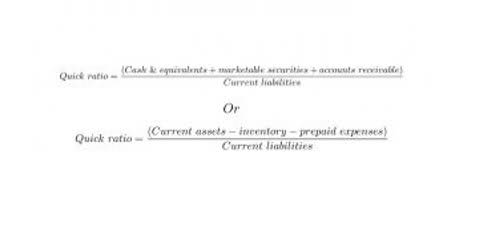
As such, the balance sheet is divided into two sides (or sections). The left side of the balance sheet outlines all of a company’s assets. On the right side, the balance sheet outlines the company’s liabilities and shareholders’ equity. When a company pays dividends, it reduces its retained earnings. QuickBooks ProAdvisor Dividends are a distribution of profits to shareholders and, therefore, decrease the amount of accumulated profit available for reinvestment. Each accounting period, the revenue and expenses reported on the income statement are “closed out” to retained earnings.
- It’s important to analyze the reasons behind the high level of retained earnings.
- In between the opening and closing balances, the current period net income/loss is added and any dividends are deducted.
- Shareholders all get cash dividends if you issue cash dividends, for example.
- This special report tells you about the things your business owns and what it owes to others, as well as how much value your business has for its owners.
- As the formula suggests, retained earnings are dependent on the corresponding figure of the previous term.
- For example, if the dividends a company distributed were actually greater than retained earnings balance, it could make sense to see a negative balance.
- Revenue is the income a company generates from business operations during a period, while retained earnings are the accumulated net income that was not paid out as dividends to shareholders to date.
What Does It Mean for a Company to Have High Retained Earnings?
Shareholders equity—also stockholders’ equity—is important if you are selling your business, or planning to bring on new investors. In that case, they’ll look at your stockholders’ equity in order to measure your company’s worth. Retained earnings are like a running tally of how much profit your company has managed to hold onto since it was founded. They go up whenever your company earns a profit, and down every time you withdraw some of those profits in the form of dividend payouts.
Calculate and Subtract Dividends Paid to Shareholders in Current Period
- We briefly go through commonly found line items under Current Assets, Long-Term Assets, Current Liabilities, Long-term Liabilities, and Equity.
- All of the above ratios and metrics are covered in detail in CFI’s Financial Analysis Course.
- Profits provide business owners and management with flexibility in using the money.
- This ending balance is found in the stockholders’ equity section of the balance sheet as of the end of the prior accounting period.
- Current liabilities are usually paid with current assets; i.e. the money in the company’s checking account.
Still, shareholder equity alone is not a definitive indicator of a company’s well-being. It should be used in conjunction with other tools and metrics to analyze a company’s financial health. Many investors view companies with negative shareholder equity as risky or unsafe investments. Retained earnings for a single period can reveal trends in the company’s reinvestment, but they don’t tell you how those funds are used, or what the return on investment is. Looking at retained earnings can be useful, but they’re more valuable when observed over a longer period of time.

Applications in Financial Modeling

For example, if the dividends a company distributed were actually greater than retained earnings balance, it could make sense to see a negative balance. On the other hand, retained earnings are the part of a company’s cumulative profit set aside for future use. They can be used for expansion or to pay retained earnings on balance sheet dividends to shareholders later.


This statement shows changes in the accumulated RE during the period. With a more conservative view at Acme Manufacturing’s operating liquidity, retained earnings there is definitely enough cash and liquid assets to cover short term debts. As you can see, Acme Manufacturing’s liquidity shows over $2.00 available in current assets for every dollar of short term debt – this is acceptable.
How Net Income Impacts Retained Earnings
The rest of the formula for retained earnings stays similar in this version. Retained earnings provide a source of internal funding for future growth initiatives. Companies can use them to invest in research and development, expand their operations, acquire other businesses, or reduce debt. Using retained earnings for growth can avoid the need to raise external capital, such as issuing new stock or taking on additional debt. The statement of retained earnings reconciles the beginning and ending balances of retained earnings for a specific period.
